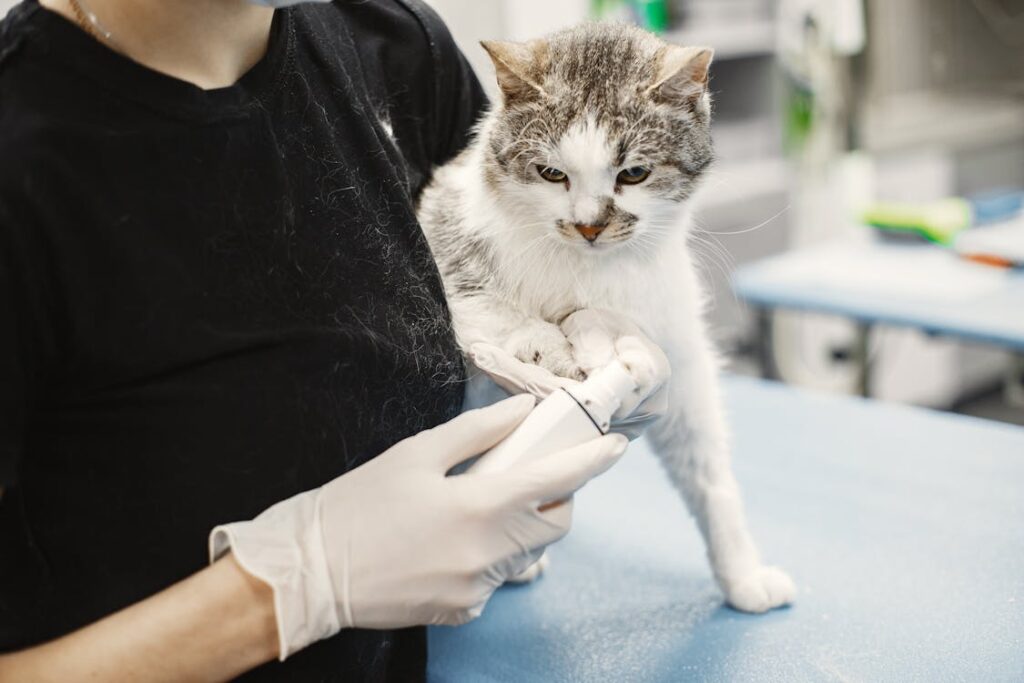Fleas are more than just an annoyance for cats; they can cause serious discomfort and health issues. These tiny parasites thrive in warm environments and can quickly infest your home. Understanding how to treat and prevent flea infestations is essential for every cat owner.
Understanding Fleas and Their Impact on Cats
Fleas are small, wingless insects that feed on the blood of mammals, including cats. Their bites can cause itching, irritation, and even allergic reactions in some cats. In severe cases, fleas can lead to anemia, especially in kittens or older cats with compromised immune systems. Understanding the life cycle of fleas is crucial for effective treatment. Fleas go through several stages: egg, larva, pupa, and adult. Adult fleas lay eggs in your home, which can lead to a rapid increase in the flea population if not addressed promptly.
Signs of Flea Infestation
Recognizing the signs of a flea infestation is the first step in effective treatment. Cats may exhibit excessive scratching, biting at their skin, or grooming more than usual. You may also notice small, dark specks of flea dirt (flea feces) on your cat’s fur or in their bedding. Additionally, hair loss and skin irritation can indicate a flea problem. If you suspect your cat has fleas, acting quickly is vital to prevent the infestation from worsening.
Treatment Options for Cat Fleas
Several treatment options are available for dealing with fleas. The choice of treatment often depends on the severity of the infestation and your cat’s age and health. Here are some popular methods:
- Topical Treatments
Topical flea treatments, often referred to as spot-on treatments, are popular among cat owners. These products are applied directly to your cat’s skin, usually between the shoulder blades, where they are less likely to lick them off. Brands like Frontline and Advantage provide effective protection against fleas and are typically applied monthly. Always follow the product instructions and consult your veterinarian if unsure which product is best for your cat.
- Oral Medications
Oral flea treatments are another effective option. These medications kill fleas quickly and can provide protection for several weeks. Some popular oral medications include Comfortis and Capstar. Always ensure that the medication is specifically formulated for cats and consult your veterinarian for dosage recommendations.
- Flea Collars
Flea collars are a convenient option for long-term protection. These collars release insecticides that repel fleas, offering continuous protection for several months. Look for collars that are specifically designed for cats and monitor your cat for any signs of irritation.
- Environmental Control
Fleas can easily infest your home, so it’s essential to treat the environment alongside your cat. Vacuuming regularly helps remove fleas, eggs, and larvae from carpets and furniture. Wash your cat’s bedding, toys, and any areas where your cat spends time in hot water to eliminate fleas. Consider using flea sprays or foggers designed for home use, ensuring they are safe for pets and follow the manufacturer’s instructions.
Preventing Future Infestations
Prevention is key when it comes to fleas. Regularly using flea prevention treatments can help keep your cat protected year-round. Consult your veterinarian about a suitable preventive regimen tailored to your cat’s needs. Additionally, keeping your home clean and free of clutter will help reduce the likelihood of flea infestations.
Regular Grooming
Regular grooming not only helps you bond with your cat but also allows you to check for fleas. Use a flea comb to comb through your cat’s fur, focusing on areas where fleas are likely to hide, such as around the neck and base of the tail. This practice can help catch infestations early before they become severe.
Seeking Veterinary Advice
If your cat experiences severe itching, hair loss, or skin infections due to fleas, it’s essential to consult a veterinarian. They can recommend appropriate treatments and provide guidance on managing your cat’s overall health.
